Adaptation Speed: Mechanisms, Processes, and Applications
Updated On: October 26, 2025 by Aaron Connolly
What Is Adaptation Speed?
Adaptation speed basically tells us how fast an organism or system can adjust to new conditions or stimuli. We see this in both biological stuff—like bacteria chasing food—and in artificial things, like neural networks learning fresh patterns.
Definition and Core Concepts
When we talk about adaptation speed, we mean the rate at which a system responds and settles into new environmental conditions. In biology, it’s the time an organism needs to reach a new stable state after something changes.
People measure adaptation speed by looking at a few things. The response time marks how long it takes for changes to start, and the settling time shows when the system finally stabilizes.
The size of the change really matters. Small tweaks happen faster than big overhauls.
How sensitive the system is at baseline also plays a role. If it’s more sensitive, it’ll notice and react more quickly.
Energy makes a big difference, too. Systems with plenty of energy zip through changes, but if energy’s tight, they slow down to keep things accurate.
Significance in Biological and Artificial Systems
Biological adaptation speed can decide who survives when things shift. Bacteria, for example, change their movement patterns in seconds when they sense food. Sensory neurons also adapt to bright lights or loud noises to keep us sensitive to new inputs.
In artificial systems, adaptation speed shapes how well and how efficiently things work. Neural networks need to balance learning speed and accuracy. If they learn too fast, they mess up. Too slow, and they waste time.
Key applications include:
- Sensory processing in nervous systems
- Motor learning for rehab
- Machine learning algorithms
- Robotic control systems
Turns out, the best adaptation speed isn’t the same everywhere. Visual systems handle lighting changes quickly, but motor systems take their time to keep things precise and safe.
Adaptation Speed Versus Adaptation Capacity
Adaptation speed and adaptation capacity aren’t the same thing. Speed is all about how fast change happens. Capacity means how much change the system can handle.
Some systems adapt quickly but only within a tight range. Others are slow but can deal with much bigger changes.
This trade-off shows up everywhere, whether you’re looking at biology or machines.
Energy use is often the main limiter. Speedy adaptation burns through more energy but gets results faster. Slower adaptation saves energy and keeps things accurate.
| Factor | Fast Adaptation | Slow Adaptation |
|---|---|---|
| Energy use | High | Low |
| Accuracy | Variable | High |
| Response time | Quick | Delayed |
| Stability | Less stable | More stable |
If we understand these trade-offs, we can design better artificial systems and make sense of biological quirks.
Biological Mechanisms Influencing Adaptation Speed
Our brains control how fast we adapt using networks of neurons that process and react to changes. Visual neurons can shift their responses in just seconds, and sensory systems keep adjusting their sensitivity as new stuff comes in.
Role of the Brain in Adaptation
The brain manages adaptation through neural networks that are always on the lookout for environmental shifts. Areas like the visual cortex (V1 and V2) have neurons that quickly change their responses when something new pops up.
Key brain regions involved in adaptation:
- Visual cortex – handles and adapts to visual info
- Thalamus – passes sensory info around the brain
- Sensory processing areas – sync up responses from different senses
The brain takes inputs from two main routes through the thalamus. X-type cells like slower motion, while Y-type cells react better to fast stuff. These overlapping channels let us flexibly adapt to whatever’s happening.
When we adapt, the brain doesn’t just dial things down. It actually shifts neural responses away from the adapting stimulus—a “repulsive shift,” as researchers call it. This trick keeps us sensitive across a wide range of situations.
Impact of Neuronal Activity
Neurons show off their plasticity by changing how they respond as we adapt. Some neurons can switch their preferred stimulus in under a minute.
Three main adaptation patterns show up:
- Speed repulsive – responses shift away from the adapting stimulus
- Low speed attenuated – responses lean toward slower speeds
- High speed attenuated – responses move toward faster speeds
Most adapting neurons use response gain control. This mechanism turns down overall response strength but keeps discrimination sharp. It’s more complicated than just neurons getting tired.
Neurons that adapt to fast speeds show big repulsive shifts. Those at their sweet spot just dial things back. This flexibility lets our nervous system keep up with changing conditions and avoid getting overwhelmed.
Sensory System Adaptations
Sensory systems are always recalibrating based on what’s just happened. Visual adaptation can last seconds or minutes, changing how we see things right after.
Common sensory adaptations:
- Contrast sensitivity tweaks
- Motion detection recalibration
- Orientation preference shifts
- Speed perception changes
The visual system uses special gratings with a wide range of frequencies to tell true speed adaptation from just temporal frequency changes. This helps researchers measure real adaptation, not just stimulus-specific effects.
Speed and contrast adaptation often go hand in hand. Most cells show gain control for both at once. But, interestingly, the actual tuning shifts for speed and contrast work independently, so different neural circuits must handle each one.
Neural Basis of Adaptation Speed
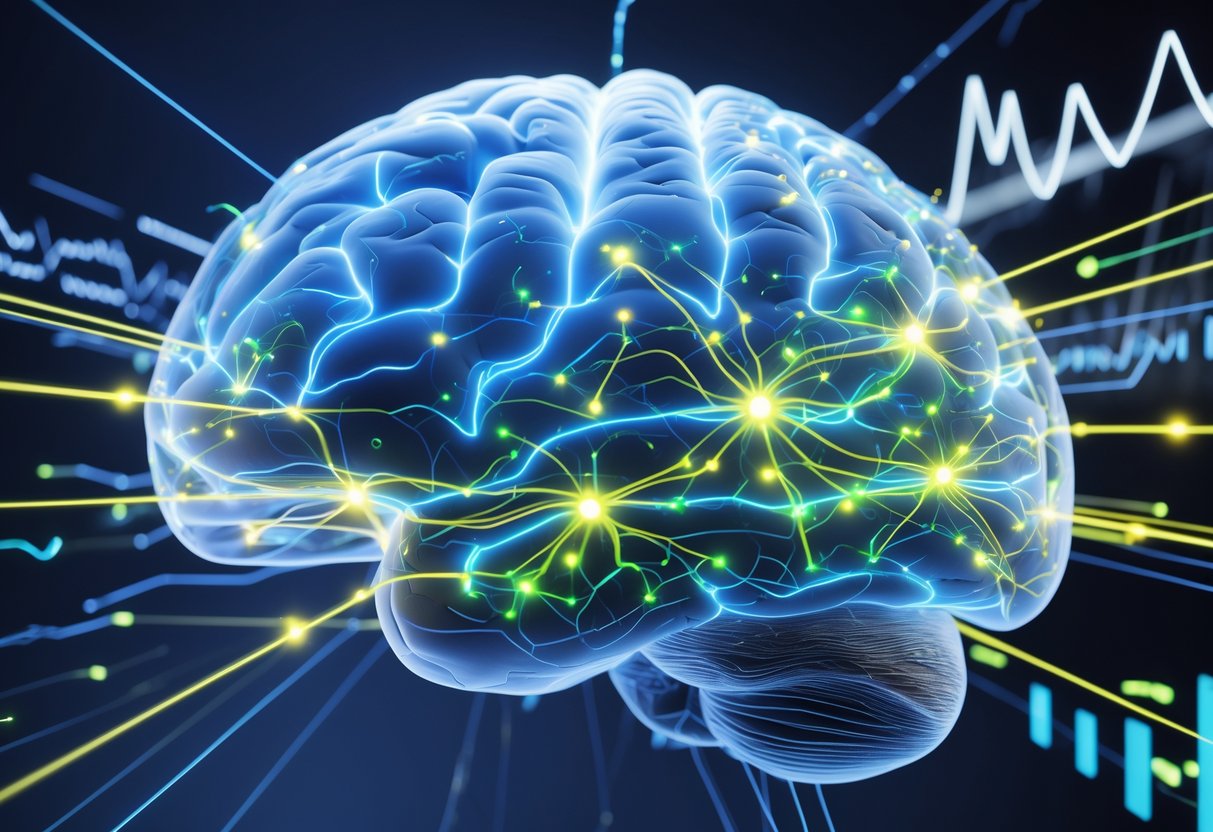
The brain adapts using neural processes that set how fast we learn and react. Neurons encode info differently as we adapt, and plasticity plus feedback loops work together to control adaptation speed.
How Neurons Encode Changes
Neurons change their firing patterns when they get the same stimulus over and over. If you see or hear something repeatedly, individual neurons start firing less—a process called neural adaptation.
This acts like a high-pass filter in your brain. New info gets priority, while familiar stuff fades into the background.
Researchers found that adapting at higher speeds always makes us perceive things as slower. But when we adapt to slow speeds and then test with fast ones, we actually think things are moving faster.
The middle temporal area (MT) in the brain really shows these effects. Even brief adaptation to moving objects reduces neural response strength and narrows our speed detection range.
Neurons along the visual pathway adapt at different rates. Peripheral neurons adapt faster than those higher up, so there’s a kind of cascade through the system.
Neuronal Plasticity and Learning
Neural plasticity is what lets our brains change connections quickly. This flexibility controls adaptation speed in all sorts of situations.
Adaptation isn’t just neurons getting tired. Instead, network interactions reshape how they talk to each other as we learn.
Synaptic strength can change in milliseconds or minutes. Short-term plasticity tweaks immediate responses, while long-term changes build up lasting adaptations.
The brain uses predictive coding during adaptation. Neurons guess what’s coming next and adjust sensitivity, making future responses smoother.
Attention can even mess with perceived speed after adaptation. That means several independent systems influence how quickly we adapt to new things.
Feedback Loops in Neural Networks
Neural feedback loops create cycles that fine-tune adaptation speed. Forward signals carry sensory info, and backward connections send corrections.
These loops don’t all run at the same speed. Rapid feedback happens within 50-100 milliseconds, while slower changes take a few seconds.
Inhibitory neurons keep feedback in check. They make sure adaptation doesn’t go overboard by limiting how much neural activity can shift.
How fast we adapt depends on these network-level interactions. Strong feedback speeds things up, but weak feedback slows them down.
The balance between excitation and inhibition is everything. Too much excitement causes chaos, but too much inhibition stops necessary changes.
Multiple feedback pathways can work at once. That way, different brain regions adapt at their own best speeds.
Adaptation Speed in Sensory Systems
Our sensory systems are always adjusting to what’s around us, but they do it at different speeds. Visual systems react to speed changes super fast, while smell and touch take their time but get things right.
Visual Adaptation to Speed
Our eyes adjust to movement in just seconds. If you watch fast-moving objects for a bit, slower things suddenly seem even slower.
That’s because neurons in our visual system change their sensitivity after seeing fast motion. They become less responsive to movement in general.
It works both ways. If you adapt to slow speeds and then see something fast, it looks even faster. The brain is basically recalibrating its speedometer.
Key visual adaptation features:
- Kicks in within a minute
- Alters perceived speed for several minutes
- Works for both speeding up and slowing down
- Involves a bunch of brain areas teaming up
Athletes take advantage of this. Racing drivers who practice at high speed often find normal driving feels weirdly slow. Their visual system has just adapted to process things faster.
Auditory and Tactile Adaptations
Sound and touch adapt differently than vision. These systems care more about getting things right, so they adjust more slowly.
Auditory adaptation lets us tune out background noise. Hearing neurons gradually chill out in response to constant sounds. This whole process can take a few minutes.
Touch adaptation happens when we stop noticing clothes against our skin. Pressure-detecting neurons slowly cut back their activity if the pressure doesn’t change.
Both sound and touch use up more energy than vision does. They have to juggle speed, accuracy, and energy use.
Adaptation characteristics:
- Takes minutes, not seconds
- More energy-hungry than vision
- Precise in final tuning
- Less likely to overshoot
Olfactory Adaptation Mechanisms
Smell adapts the slowest, but it’s thorough. It can take ten to thirty minutes to get used to a new odor.
Calcium signaling is a big part of this. When smell neurons detect something, calcium levels inside the cells change. That kicks off adaptation mechanisms, lowering sensitivity over time.
Proteins inside these neurons adjust their activity based on calcium. This creates a more lasting change than in other senses.
Smell adaptation matters for survival. It helps us notice new, possibly dangerous or tasty odors while ignoring the usual background smells.
Olfactory adaptation process:
- Smell triggers calcium release
- Proteins adjust neuron sensitivity
- Full adaptation takes 10-30 minutes
- Most energy-efficient of all senses
- Sensitivity changes last the longest
Factors That Affect Adaptation Speed
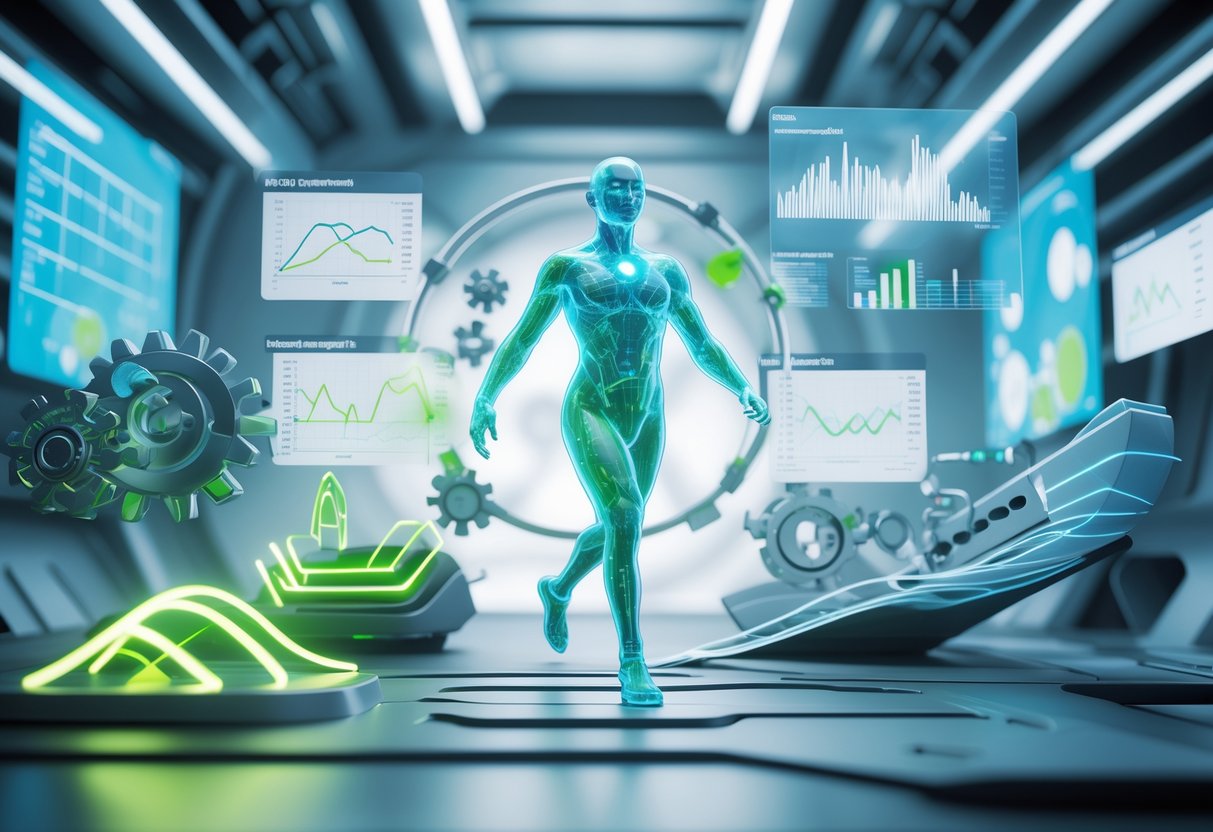
How fast we adapt in esports depends on three big things: the kind of training loads we use, our own individual traits, and what’s going on in the environment. If we get a grip on these, we can tweak our training and set realistic goals for improvement.
Load Types and Stimulus Intensity
Different training intensities shape how fast players adapt in competitive gaming. High-intensity practice sessions usually spark quicker improvements at first, but you’ll need longer breaks to recover.
When you push yourself at max effort—like grinding ranked matches for hours—you ramp up adaptation speed fast. But if you don’t manage it well, burnout can creep in within just a few weeks.
Medium-intensity training tends to work best for most folks. This might mean 30-45 minutes of aim training, reviewing replays, and a handful of competitive matches each day.
Low-intensity stuff, like watching streams or playing casually, doesn’t do much for adaptation speed. Sure, it helps you maintain your current skills, but don’t expect big leaps.
Heads up: Lots of players confuse time spent playing with quality practice. Just putting in hours without focus won’t really boost your adaptation speed.
Mixing up high and moderate intensities seems to work best. Pros usually stick to about 70% moderate sessions and 30% high-intensity to keep their adaptation speed on point through the season.
Individual Variations in Response
Everyone adapts to esports training at their own pace, and genetics play a big role. Age matters too—players aged 16-22 usually pick up reaction time and mechanical skills the quickest.
Baseline skill level makes a huge difference. Beginners often see their skills shoot up in the first 100 hours of focused practice. Intermediate players progress more slowly, but they keep moving forward over several months.
Prior experience with similar games can really speed things up. If you switch from Counter-Strike to Valorant, you’ll adapt way faster than someone starting from scratch.
Sleep quality and nutrition have a direct impact. Players who get less than seven hours of sleep pick up new skills about 40% slower than those who rest well.
Learning style matters, too. Visual learners do better in games with complex maps, while analytical thinkers shine in strategy-heavy games like League of Legends.
Mental resilience shapes long-term growth. Players who shrug off losses keep improving, but if you tilt easily, you might hit a plateau sooner than you’d like.
Environmental and Contextual Influences
Your practice environment makes a bigger difference than you might think. Consistent setups—same monitor, mouse sensitivity, chair—help you learn faster by cutting out distractions.
Temperature and lighting also matter. Most pros keep their rooms cool, around 18-22°C, and use steady lighting to stay focused.
Social factors can change how quickly you improve. Training with teammates at your level boosts adaptation speed by about 25%. Oddly enough, practicing with much better players can actually slow you down if it gets too frustrating.
Practice timing counts, too. Most people adapt best during their natural alertness peaks—usually late morning or early evening, depending on your internal clock.
Equipment quality often gets overlooked. If you use a 144Hz monitor, you’ll adapt to fast-paced games quicker than someone stuck on 60Hz.
Distractions are the enemy of progress. Background noise, pop-up notifications, or random interruptions can slash your training effectiveness by more than half. Setting up a dedicated practice spot really helps.
The competitive context shapes adaptation too. If you’re prepping for a tournament, practicing the exact game mode and rules makes you adapt faster to what you’ll actually face.
Adaptation Speed in Motor Control
The brain tweaks movement patterns at different rates depending on feedback and the task at hand. Proprioception lets us make quick corrections, while different load types demand varying adaptation times. Our central nervous system juggles several strategies to make these changes work.
Proprioception and Movement Adjustments
Proprioception constantly tells us where our body parts are. This system works faster than vision when we need to adjust movements on the fly.
When you reach for something, proprioceptive feedback helps you correct your hand position in a split second. The brain updates its internal map using this info.
Key things that speed up proprioceptive adaptation:
- Clear feedback—Strong, unambiguous signals help you adjust faster.
- Repetition—The more you practice, the quicker you adapt.
- Task simplicity—Simple moves get locked in sooner than complex ones.
People adapt faster when there’s less uncertainty about body position. If proprioceptive signals are clear, the brain trusts them and speeds up the process.
The nervous system blends proprioceptive and visual feedback. Still, proprioception often takes the lead during fast, ongoing actions.
Types of Loads: Elastic, Viscous, Inertial
Our motor system tackles different types of resistance at different speeds. Each load comes with its own challenges for learning new movement patterns.
Elastic loads work like springs—they push back more the farther you stretch them. Since force and position have a predictable relationship, adapting to elastic loads is straightforward.
Viscous loads feel like moving through syrup. The faster you try to move, the more resistance you get. The brain usually needs more time to adapt to this kind of force.
| Load Type | Adaptation Speed | Key Challenge |
|---|---|---|
| Elastic | Fast (10-20 trials) | Force varies with position |
| Viscous | Moderate (30-50 trials) | Force varies with velocity |
| Inertial | Slow (50+ trials) | Force varies with acceleration |
Inertial loads add mass, making acceleration and deceleration trickier. These take the longest to adjust to, since they mess with muscle timing.
Adaptation speed depends on how big the change is. Smaller shifts are easier to handle than big jumps in resistance.
Central Nervous System Strategies
The brain pulls from several strategies to ramp up motor adaptation. These work together to help us learn new movements efficiently.
Forward models let the brain predict what will happen before sensory feedback arrives. It updates these predictions as you move and get results.
Error-based learning kicks in when your movement doesn’t match what you intended. Bigger errors usually mean faster adaptation—but only up to a certain point.
The cerebellum steps up here, processing feedback and tweaking motor commands for next time.
Other strategies include:
- Multiple timescales—Quick fixes for immediate errors, slower learning for lasting changes.
- Context switching—Switching quickly between different learned movements.
- Savings effect—Relearning something you’ve done before goes faster.
How the brain manages uncertainty really matters. If it’s confident in the sensory info, adaptation speeds up. If the feedback is noisy or unreliable, learning slows down.
The motor system also uses meta-learning—basically, it gets better at learning new motor skills the more it adapts.
Adaptation Speed in Perception
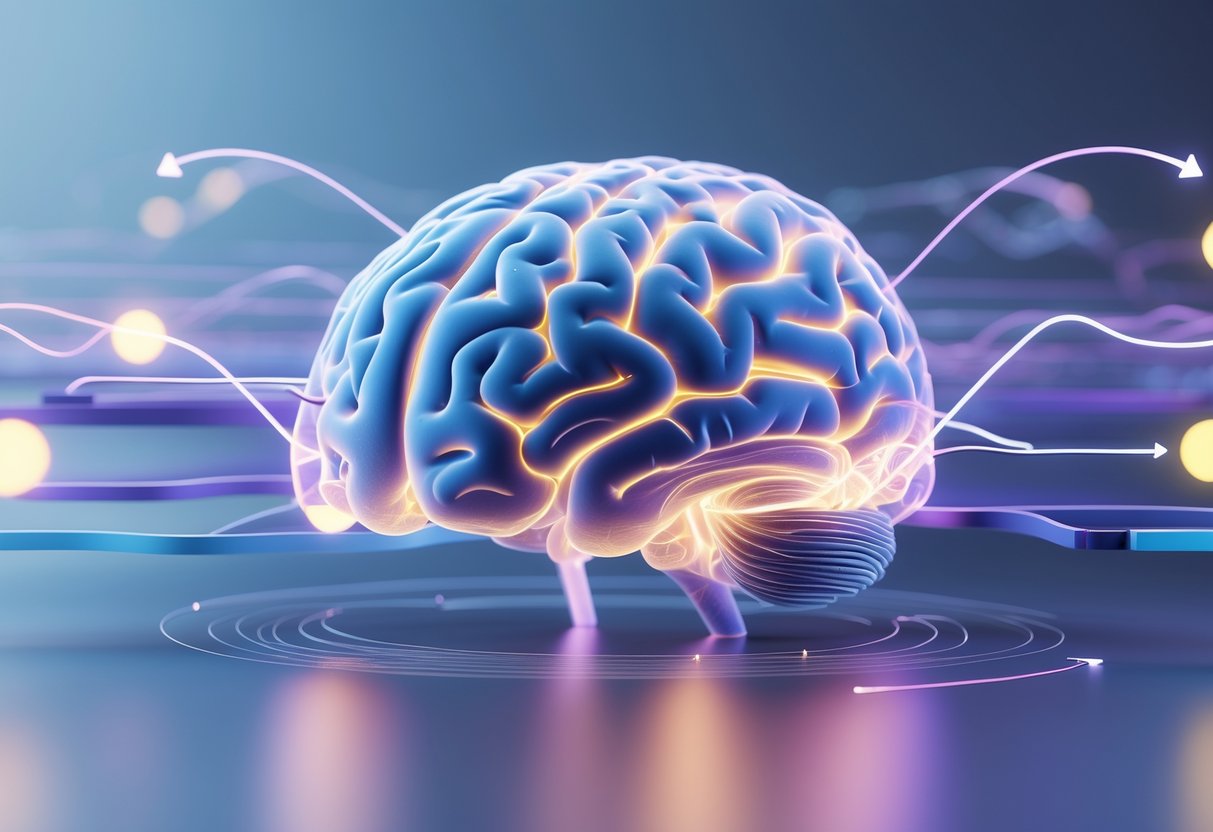
Our brains constantly shift how we see moving objects. Specialized neurons adjust their responses based on what we’ve seen recently. This shapes both how fast we think things move and how our attention changes what we notice.
Visual Perception and Motion
When we watch things in motion, our visual system adapts quickly to recent experiences. Adaptation happens as neurons become less sensitive to repeated sights.
If you stare at something fast, slower things seem almost motionless right after. Motion-sensitive neurons fire less after they’re exposed to fast movement for a while.
This isn’t just neural fatigue—the system is actively recalibrating. Fast-moving scenes make test objects seem slower than they really are.
Adapting to slow speeds doesn’t really change how we see faster motion. It looks like our visual system uses different tricks for different speed ranges.
The timing and strength of these effects can vary a lot. Some last just a few seconds, others stick around for minutes, all depending on how long and how intensely you watched the original motion.
Speed Constancy and Re-Normalisation
Our visual system keeps speed perception fairly stable by using re-normalisation. This lets us judge motion pretty accurately even as our environment keeps changing.
Attention plays a big part. When we focus on moving things, we almost always overestimate their speed. This works separately from adaptation, so both effects can happen together.
Researchers found that attention can still shift speed perception even after strong adaptation. That shows adaptation is more than just neurons getting tired—it’s an active recalibration.
The brain uses two main systems: one reacts quickly to changes, the other keeps things steady over time. We actually judge speed by comparing what these two systems tell us.
This lets us tell the difference between truly fast objects and those that only seem fast because we’ve been watching slow motion.
Adaptation Speed in Causal Models and Artificial Intelligence
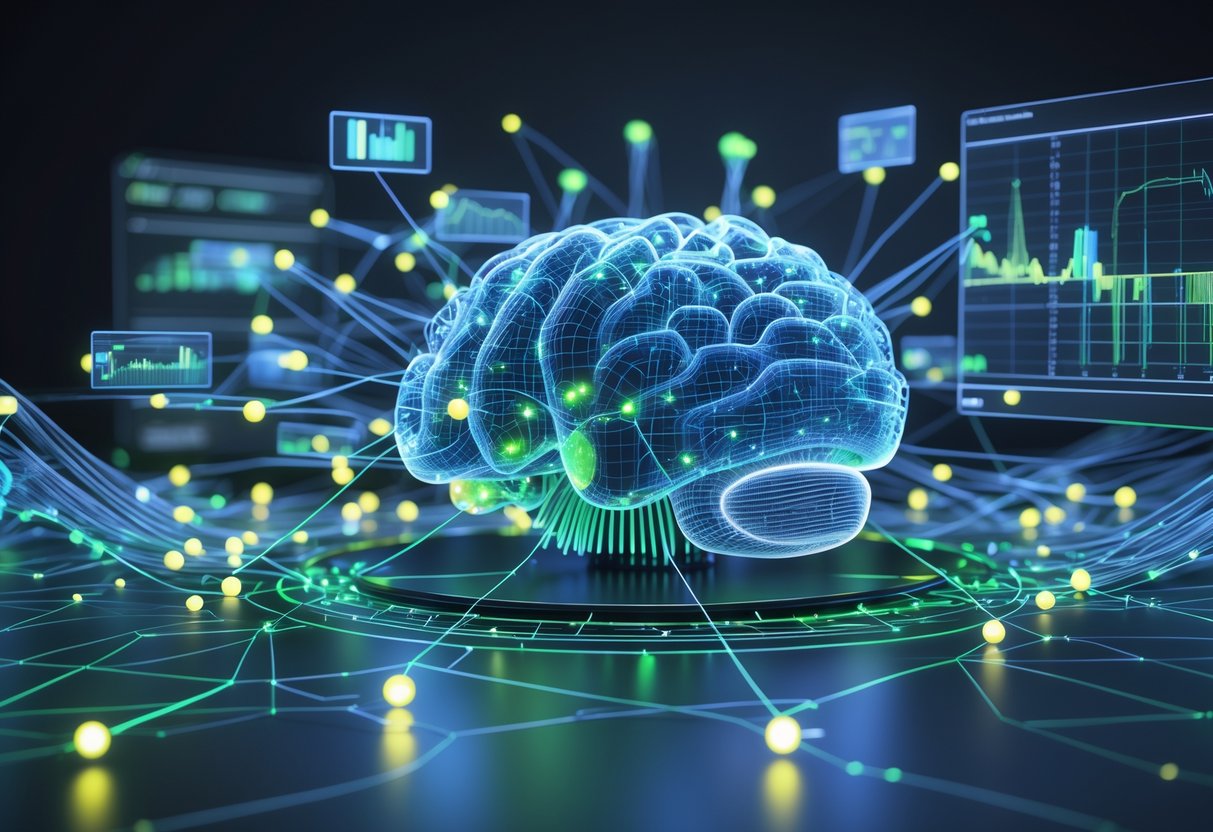
Machine learning systems need to adapt quickly when things change. Causal models help us figure out how fast that happens. The speed depends on how systems learn from new data, handle changes, and keep things fair for everyone.
Learning Rates in Machine Learning
Learning rates decide how fast AI systems update when they get new info. Causal models help us see which factors matter most for these updates.
When a machine learning model faces new situations, adaptation speed comes down to how different the new and old setups are. Models that understand cause and effect adapt faster than those that don’t.
Key things that affect learning speed:
- Parameter distance—How much the new situation differs from what the model knows.
- Causal structure—Models that get causes adapt faster than ones that just look at effects.
- Training data quality—Clean, relevant data speeds things up.
Stochastic optimization research shows models adapt faster when they figure out which variables actually cause changes. That way, they don’t waste time on the wrong stuff.
Game systems use these ideas to adjust to new player behavior. A matchmaking system learns quicker if it understands what really drives skill differences, not just the results.
Domain Shifts and Transfer Learning
Domain shifts happen when AI runs into situations it hasn’t seen before. Transfer learning helps models use what they know in new contexts.
Common domain shift examples:
- Language models switching between formal and casual speech.
- Image recognition dealing with different lighting.
- Gaming AI learning new maps or rules.
Causal models handle domain shifts better because they understand the real relationships behind the data. If a system knows that A causes B, it adapts faster when those links change.
Bidirectional adaptation comes up in stuff like game translation tools. These have to work both ways—say, English to another language and back. Adapting is quicker in the direction that lines up with the underlying causes.
Studies show models with cause-effect structures adapt at different speeds depending on what’s changed. Anti-causal models sometimes lag behind, especially when bias variables get in the mix.
Fairness Considerations in Adaptive Systems
Fairness gets tricky when adaptive systems learn from biased data or make decisions that affect different groups. Sensitive variables between cause and effect can slow down fair adaptation.
Bias creeps in when:
- Training data has built-in discrimination.
- Some groups get treated differently as the system learns.
- The system adapts faster for certain users.
Structural causal models help us spot where bias slips into the process. A cause-bias-effect structure can show how things like race or gender affect learning speed and fairness.
Gaming platforms run into this with matchmaking. They need to balance quick adaptation with fair treatment for all players, no matter their background or skill.
Just a note: Faster adaptation isn’t always a win if it makes bias worse.
Fairness-aware causal models track how sensitive variables affect adaptation. They make sure systems don’t trade fairness for speed, so everyone gets a fair shot.
Researchers have found that including sensitive variables in causal models highlights the trade-offs. This helps developers build systems that adapt fast but still treat everyone fairly.
Trade-Offs: Energy, Speed, and Accuracy
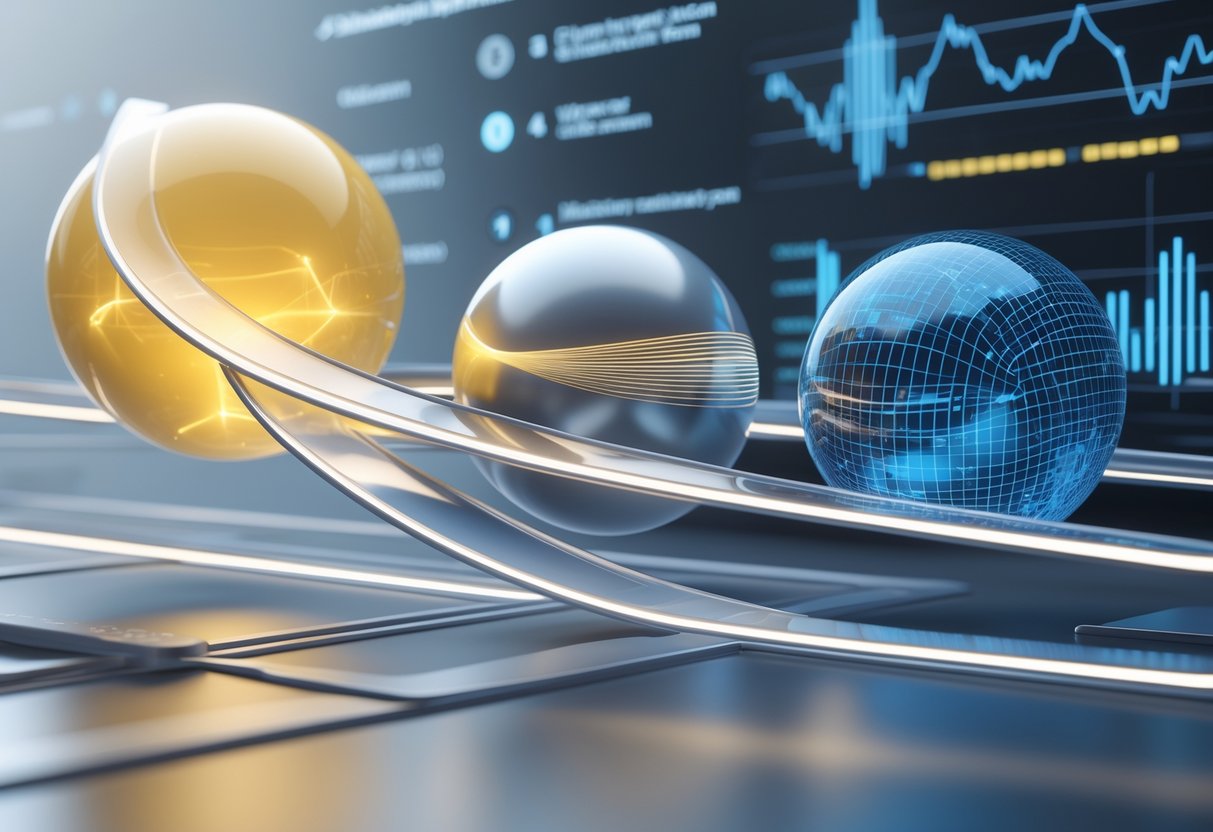
Living systems constantly juggle choices when adapting to change. They can adapt quickly and burn more energy, or take it slow and risk making mistakes.
Energy Limitations in Biological Systems
Adaptation always costs energy. When organisms need to respond to changes, their cells work harder than usual.
Scientists took a closer look at bacteria and discovered something interesting. The bacteria had to break their normal energy balance just to adapt properly.
They couldn’t just sit back and relax—they had to spend energy on purpose.
Picture this: you’re standing on a wobbly board. You can’t just freeze; you have to keep shifting your muscles to avoid falling over.
Neurons do the same thing. When they adapt to new information, they burn extra energy to stay accurate.
If they skip this energy cost, the whole adaptation system gets shaky.
Researchers looking at E. coli saw this in action. The bacteria used energy to maintain their chemical sensors.
When food ran low, the bacteria slowed their adaptation, but somehow, they still stayed accurate.
You see this trade-off everywhere in biology. Cells never get perfect adaptation for free—they always pay an energy price.
Accuracy Versus Adaptation Rate
If you adapt faster, you usually make more mistakes. Every living system has to deal with this dilemma.
Neurons run into this problem all the time. When they process information quickly, they can miss key details.
If they slow down to get things right, they risk reacting too late.
Scientists found a mathematical link here. Using more energy lets cells adapt both faster and more accurately. But there’s only so much energy to go around.
In everyday terms:
- Fast responses use up more energy and come with more errors
- Slow responses save energy but can miss out on opportunities
- The most accurate responses eat up the most energy
The E. coli studies backed this up. When the bacteria had less energy, they just slowed their adaptation. Their accuracy didn’t drop, even though their resources did.
Human neurons play by the same rules. We can think quickly and risk mistakes, or slow down to get things right, but we can’t really do both unless we use more mental energy.
Challenges in Measuring Adaptation Speed
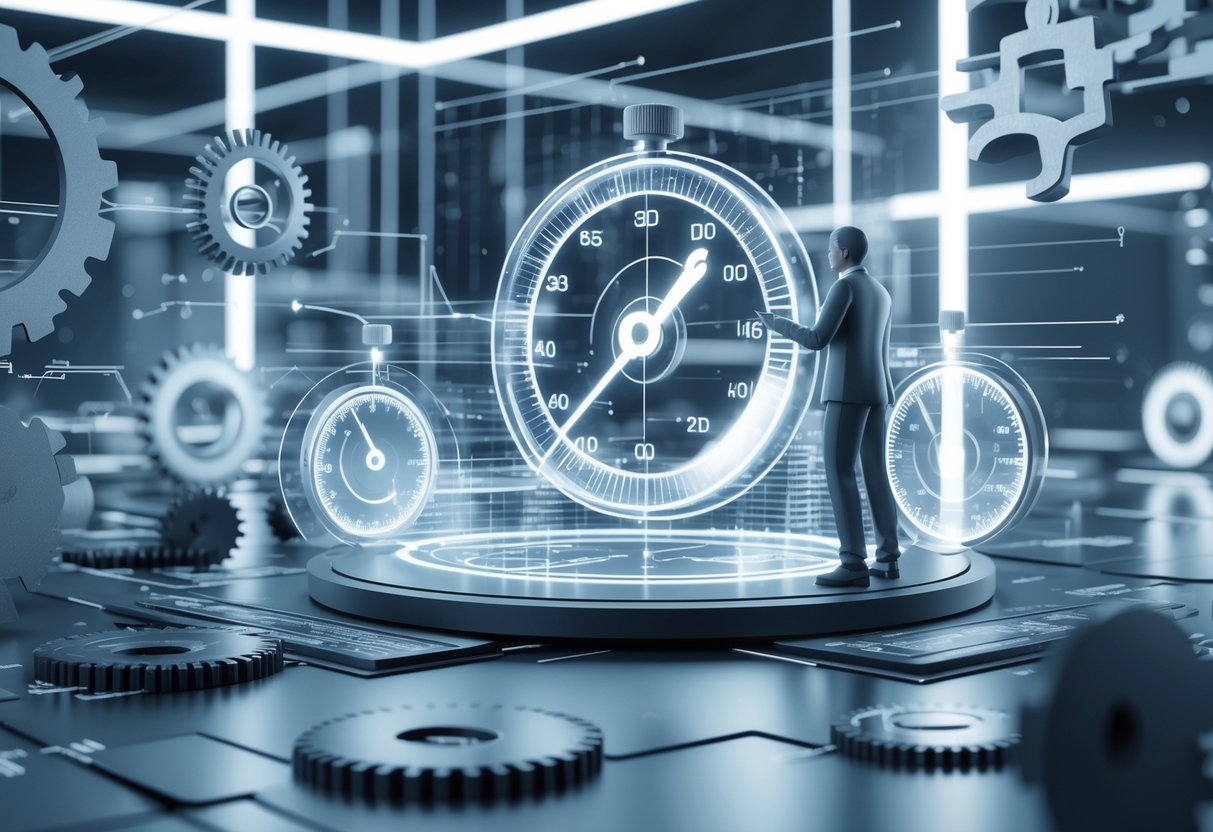
Trying to measure how quickly players and teams adapt is trickier than it sounds. The research methods out there have some major blind spots, which makes it tough to get the full picture.
Experimental Approaches
Most studies on adaptation speed happen in tightly controlled labs, not the real world of esports. Researchers often rely on simple reaction tests or basic drills.
They usually measure single changes. For instance, they might see how fast a player gets used to a new mouse sensitivity.
But in real life, adaptation means juggling lots of changes at once.
Common experimental methods include:
- Reaction time tests with changing stimuli
- Motor skill adaptation tasks
- Cognitive flexibility assessments
- Pattern recognition challenges
These studies create artificial conditions. Players know they’re being tested, so their responses aren’t always natural.
Researchers often focus on individuals, not teams. But in esports, adaptation is often a team effort, especially when strategies or metas shift.
Limitations and Potential Biases
Current measurement methods come with some big flaws. The main issue? The practice effect—players get better just by repeating the task, not by truly adapting.
Selection bias also creeps in. Researchers tend to test high-level players or volunteers, so we miss how adaptation works for everyone else.
Key measurement problems:
- Short tests miss long-term adaptation trends
- Lab settings don’t have real competitive pressure
- Individual focus skips over team adaptation
- Practice effects muddy the real adaptation data
James Connolly, a gaming expert, points out, “measuring adaptation speed in isolation misses the collaborative element that defines modern esports success.”
Even the definition of adaptation speed isn’t consistent. Some studies look at initial response time, others at recovery, and some mix together different metrics without clear priorities.
Applications of Understanding Adaptation Speed
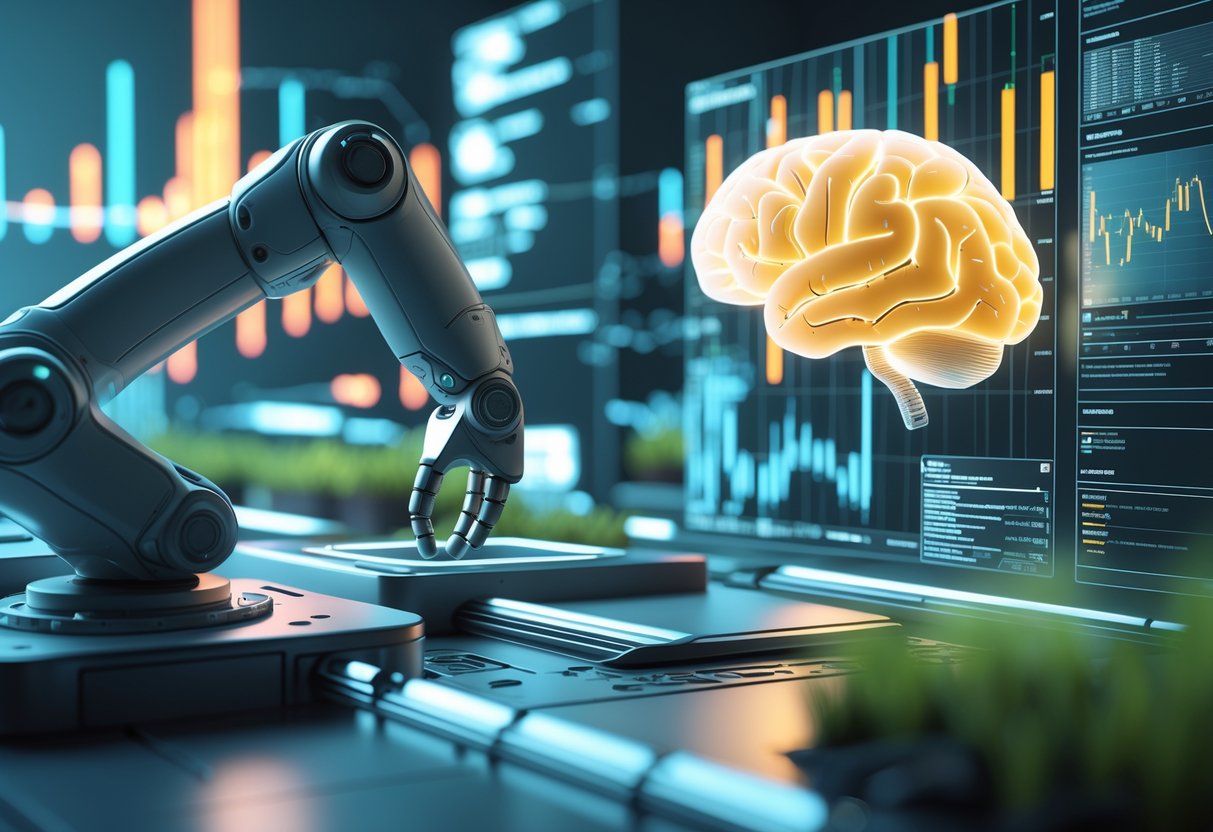
Figuring out how fast our brains adapt helps us design better therapies, smarter robots, and training programmes that actually work. Neuroplasticity—the brain’s knack for adjusting—varies a lot between people and situations.
Rehabilitation and Neuroprosthetics
Stroke patients often can’t move well because their brains need time to adapt after injury. Research shows that fast adaptation speeds help patients regain motor skills more quickly.
Physical therapists now tweak treatment intensity based on each patient’s adaptation speed. Some need slow, gradual changes. Others do better with quick jumps in difficulty.
Brain-computer interfaces depend on adaptation speed, too. These devices must learn from users, and users adapt to the tech. The quicker this back-and-forth happens, the better the results.
Key applications include:
- Robotic limbs that pick up on user intentions
- Visual implants for blind patients
- Speech devices for those with motor neurone disease
But push adaptation too fast, and you risk fatigue and slower progress.
Robotics and Control Systems
Modern robots lean on adaptation to deal with surprises. Manufacturing robots tweak their grip for different objects, kind of like how we handle a cup versus a heavy box.
Self-driving cars use adaptation, too. They need to adjust quickly to road changes, weather, and traffic. The faster they adapt, the safer they get.
Adaptation speed research helps robots:
- Learn new tasks without endless reprogramming
- Adjust to wear and changing environments
- Work better with humans
Engineers often borrow from human adaptation to make robots more user-friendly. Lately, even consumer robots use these tricks to interact better with people.
Optimising Learning and Performance
Athletes and esports players gain an edge by knowing their own adaptation speeds. Some adapt fast to new strategies but lose focus quickly. Others adapt slowly yet stay consistent.
Training now takes these patterns into account. Fast adapters need frequent changes. Slow adapters benefit from sticking to routines.
Performance applications include:
- Custom training plans for different learners
- Best timing for rest between tough sessions
- Deciding when to introduce new techniques
In esports, coaches use adaptation research to prep teams for tournaments. Players who adapt quickly to new game patches often do better when the meta shifts.
The brain adapts differently to various speeds of change. Knowing this helps everyone—from athletes to gamers—practice more effectively.
Future Directions in Adaptation Speed Research
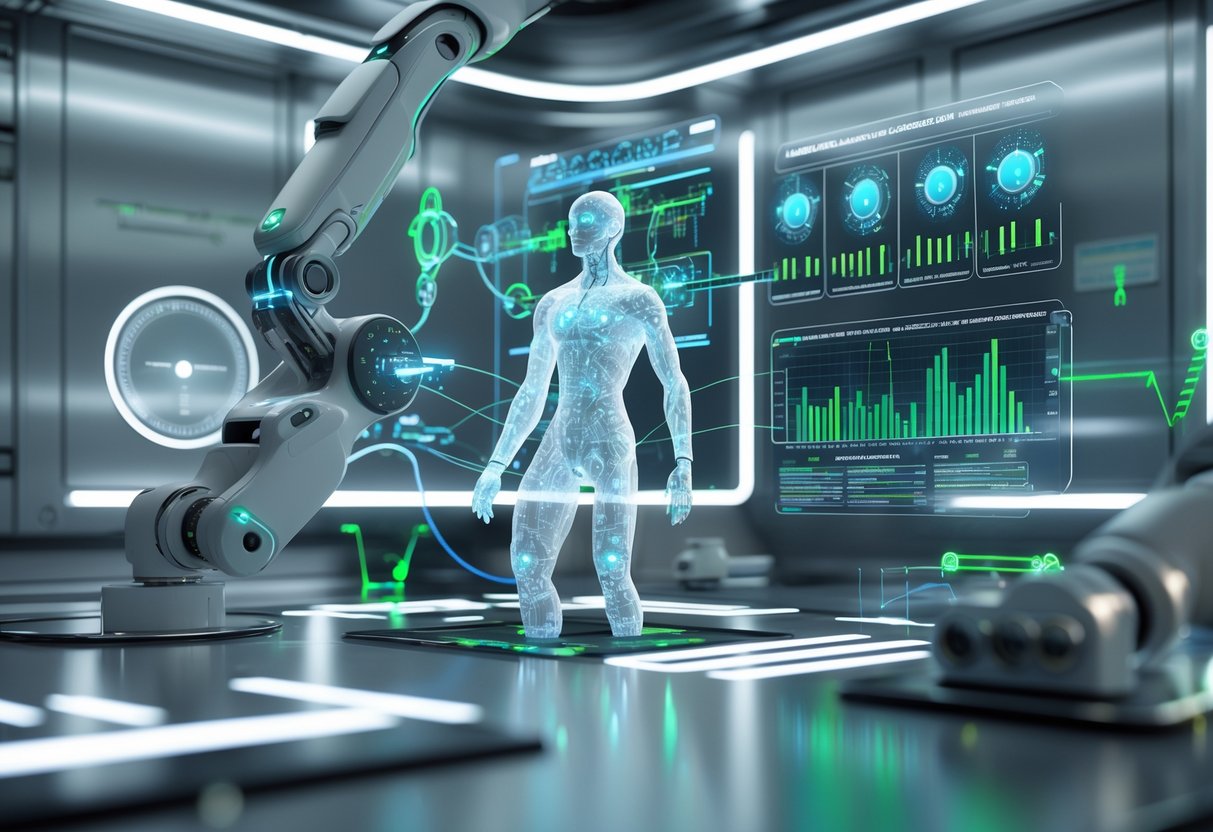
Adaptation speed research is picking up steam thanks to new tech and teamwork across fields. Scientists are mixing brain imaging tools with machine learning, and interdisciplinary teams are finding uses everywhere from gaming to medicine.
Emerging Technologies
Modern brain imaging is changing the game for adaptation speed studies. fMRI scanners now let us see which brain areas light up as people adapt to new patterns.
Machine learning helps crunch the mountains of data from those scans. We can even predict how quickly someone will adapt just by looking at their starting brain activity.
Virtual reality systems create controlled worlds for adaptation research. Scientists can change what you see or how fast things move, while tracking brain responses with EEG headsets.
New optogenetics techniques let researchers control specific neurons with light. That way, they can test exactly which circuits drive adaptation speed.
High-speed cameras track eye movements during adaptation. With pupil tracking, we can measure responses down to the millisecond.
All these tools together give us a super-detailed look at how adaptation works in the brain.
Interdisciplinary Research Opportunities
Gaming and esports research is opening new doors for adaptation speed studies. Pro gamers adapt to changing visuals at lightning speed, making them perfect test subjects.
Now, neuroscientists and sports scientists work together. They study how athletes adapt to different surfaces or lighting, and this helps design better training.
Medical rehabilitation is getting a boost from adaptation research. Stroke patients often struggle with motion perception, but understanding adaptation helps create better therapies.
Automotive engineers team up with perception experts to make driving safer. They figure out how quickly drivers adapt to new displays or warnings, then design better dashboards.
Virtual reality developers need this research to prevent motion sickness. They work with vision scientists to tweak how fast VR worlds change, so users stay comfortable.
Human-computer interaction specialists dig into how people adapt to new tech and control systems.
Frequently Asked Questions
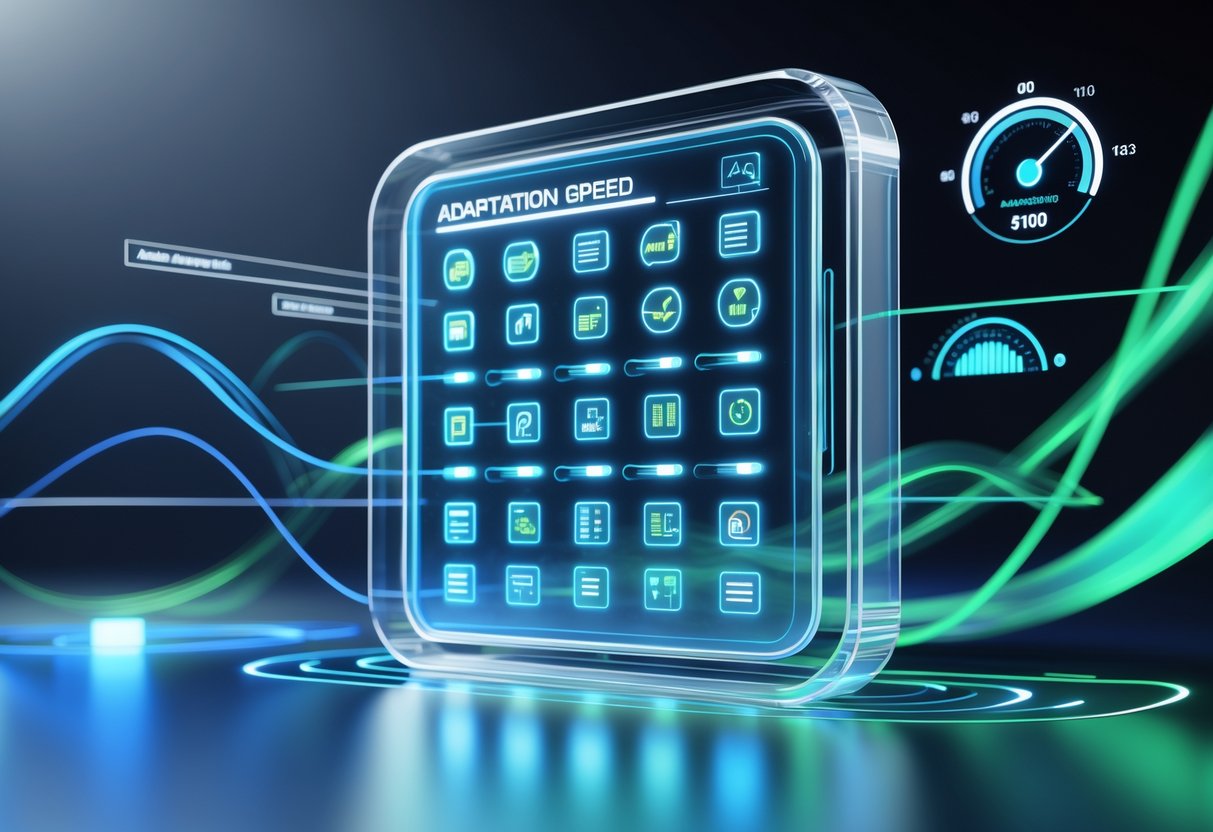
Animals adapt their movement patterns in different ways, while intelligent speed assistance systems help drivers stick to safe speeds through automation. Some regions have made these systems mandatory, and they use a few different approaches for speed management.
How do animals adjust their speed in response to environmental changes?
Animals change their speed using sensory adaptation systems that react to environmental signals. These networks use feedback loops, letting creatures adjust movement based on things like temperature, food, or predators.
Adapting takes energy to keep things stable. Research shows faster adaptation usually costs more energy, so there’s always a trade-off.
Some animals can adapt their movement in seconds or minutes. Single-celled organisms often do it even faster, since their systems are simpler.
What are the features of intelligent speed assistance in modern vehicles?
Intelligent Speed Assistance (ISA) systems tell drivers about speed limits and warn them if they’re going too fast. These systems use GPS and camera recognition to spot speed limit signs and check road conditions.
Modern ISA systems give dashboard warnings and audio alerts for speeding. Some can cut engine power or gently brake to keep things safe.
The tech connects to navigation to give real-time speed limit info. That way, drivers stay legal even on unfamiliar roads.
How have intelligent speed assistance systems evolved by 2024?
ISA tech got better with improved cameras and GPS. Now, the systems spot temporary speed limits and construction zones more reliably.
ISA now works with other safety features like adaptive cruise control and emergency braking. This makes for a more complete speed management system.
Machine learning lets ISA adapt to each driver’s habits. This cuts down on false alarms and makes drivers more likely to use it.
In what ways do intelligent speed assistance devices aid drivers?
ISA devices help drivers avoid speeding tickets by constantly reminding them of speed limits. They’re handy in areas where limits change a lot or roads are confusing.
These systems cut down on driver fatigue by handling speed checks, so drivers can focus on traffic and hazards.
Fleet managers use ISA to monitor driver behavior and lower insurance costs. The data highlights drivers who might need more training or support.
Which regulations have been established for intelligent speed assistance in Europe?
The European Union made ISA systems mandatory for all new vehicle types starting July 2022. Every new car must have at least basic speed limit info and warning features.
Manufacturers can pick from advisory systems that only warn, or interventive systems that can actually limit speed. But drivers always have the option to override.
Testing and certification standards make sure ISA systems meet set requirements for accuracy, response time, and user interface.
How does Ford’s intelligent speed assistance technology differ from others?
Ford’s ISA system uses both camera recognition and GPS data, so it can spot speed limit signs even if the GPS isn’t up-to-date or just isn’t working right.
When you enter a lower speed zone, Ford’s system will actually adjust the cruise control speed for you. That means you don’t have to keep fiddling with it every time the speed limit changes on the motorway.
Ford also connects ISA to their services platform, so they can send out remote updates to the speed limit database. This way, the system keeps up with new roads and changing speed limits—pretty handy, honestly.

